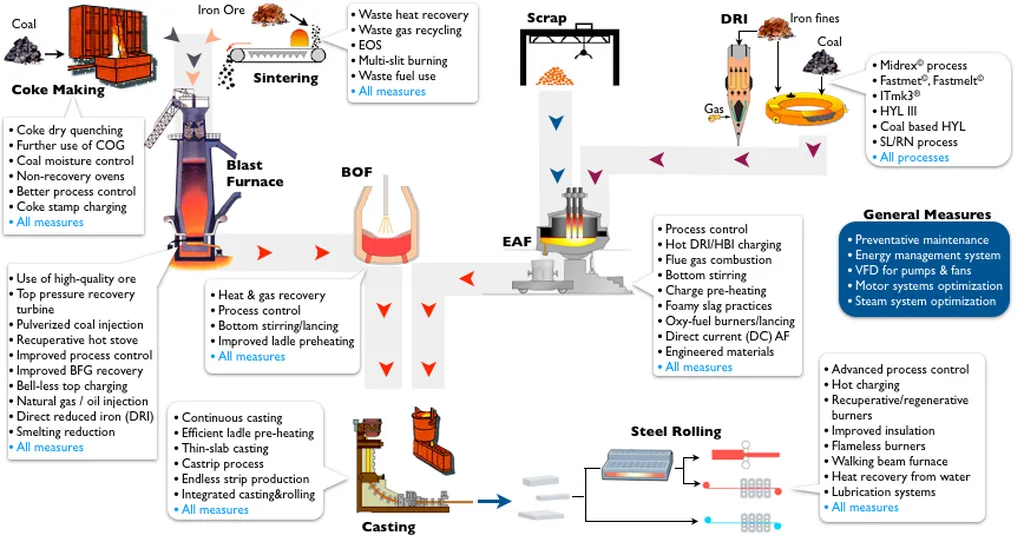In the heart of industrial manufacturing, where the transformation of raw materials into finished products is a symphony of heat, pressure, and precision, a recent study has struck a chord that could resonate through the energy sector. Xiaobo Qu, a researcher at the State Key Laboratory of Crane Technology, Yanshan University in China, has delved into the intricate world of walking beam reheating furnaces, a critical stage in the production of steel bars. His work, published in the journal *Materials Research Express* (which translates to “Materials Research Express” in English), offers a glimpse into how optimizing these furnaces could enhance efficiency and product quality, with significant implications for the energy sector.
The walking beam reheating furnace is a beast of industry, a massive oven where steel billets are heated before being rolled into bars. The quality of this heating process is paramount, as it directly affects the shaping of the billets and the performance of the final product. However, uneven temperature distribution during heating can lead to a host of issues, including non-uniform deformation resistance, bending deformation, excessive thermal stress, and even the initiation and propagation of microcracks.
Qu’s research, which used 20CrNiMoA steel billets as the subject, employed ABAQUS finite element software to simulate the temperature field distribution inside these furnaces. The accuracy of these simulations was verified through ‘black box’ experiments, ensuring that the results met industrial application standards.
The study systematically investigated the effects of temperature and time parameter settings in different heating zones of the furnace on billet temperature distribution and stress evolution. The findings were enlightening. “Increasing the charging temperature improves temperature distribution and peak stress during the preheating stage,” Qu explained. “Lower furnace temperatures during the preheating phase reduce excessive thermal stress, and optimal furnace settings in heating zone I and II enhance heating efficiency and uniformity.”
These insights are not merely academic; they have real-world commercial impacts. By optimizing the heating process, manufacturers can reduce energy consumption, improve product quality, and minimize waste. In an industry where margins can be tight and energy costs are a significant factor, these improvements can translate into substantial savings and a more competitive edge.
Moreover, the research provides a theoretical foundation and data support for optimizing on-site production heating process parameters. This could lead to more efficient and effective use of energy, a critical consideration in today’s environmentally conscious market.
Qu’s work is a testament to the power of simulation and modeling in industrial processes. By understanding and predicting the behavior of materials under different conditions, manufacturers can make informed decisions that enhance efficiency and quality. As Qu noted, “The findings provide theoretical foundations and data support for optimizing on-site production heating process parameters and improving billet heating quality.”
In the broader context, this research could shape future developments in the field of materials processing. As industries strive for greater efficiency and sustainability, the insights gained from this study could pave the way for innovative solutions that meet these demands. For the energy sector, in particular, the potential to reduce energy consumption and improve product quality is a significant step forward.
In the end, Qu’s research is a reminder of the power of scientific inquiry and its potential to drive progress in the industrial sector. As we look to the future, the insights gained from this study could illuminate the path towards more efficient, sustainable, and competitive manufacturing processes.

